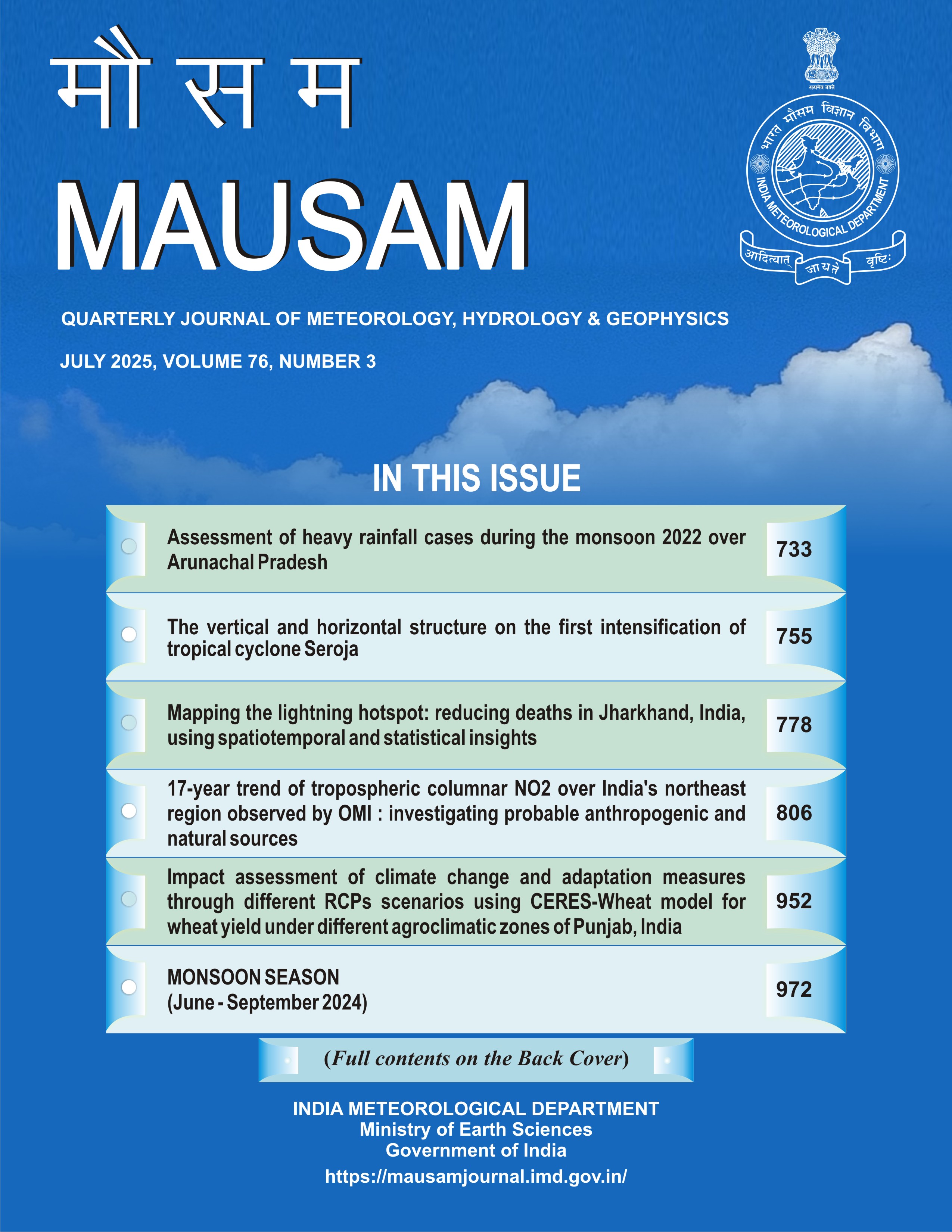Assessing the air temperature and rainfall trend over the undulating red and lateritic zone of West Bengal using Mann-Kendall test and Innovative trend analysis
DOI:
https://doi.org/10.54302/mausam.v76i3.6312Abstract
The present study aimed to assess the trend of maximum and minimum temperature at monthly scale and rainfall at monthly, seasonal and annual scale over the undulating red and lateritic zone of West Bengal, India. “TerraClimate” monthly maximum and minimum air temperature and rainfall data was collected from Google climate engine platform for the period 1958- 2021. The traditional Mann-Kendall (MK) test, Sen’s slope estimator and Innovative trend analysis (ITA) were implemented to detect the trend. The results clearly indicated that the red and lateritic zones experienced significant temperature increase during the last six decades. Both the Sen’s slope estimator and ITA showed that the minimum air temperature of February increased at the highest annual rate followed by March and November. Annual rainfall over the study area followed non- significant increasing trend as confirmed by both the MK test and ITA. The monthly and seasonal rainfall distribution pattern changed. A shift of the South-west monsoon was realized over the study zone characterized by decreasing rainfall in June and increasing rainfall in October. The ITA successfully detected the monotonic and non-monotonic trend of air temperature and rainfall. Historical trend of the extreme weather values were detected by ITA. Higher values of November rainfall showed positive trend. On the contrary, a positive trend was detected for the lower values of pre-monsoon rainfall. The present study indicated that the red and lateritic zone experienced significant changes in the temperature and rainfall pattern. The findings of the present study can be used for assessing the future trend of the weather parameters and planning and sustainable management in this climatologically and socio-economically vulnerable zone.
Downloads
Published
How to Cite
Issue
Section
License
Copyright (c) 2025 MAUSAM

This work is licensed under a Creative Commons Attribution-NonCommercial 4.0 International License.
All articles published by MAUSAM are licensed under the Creative Commons Attribution 4.0 International License. This permits anyone.
Anyone is free:
- To Share - to copy, distribute and transmit the work
- To Remix - to adapt the work.
Under the following conditions:
- Share - copy and redistribute the material in any medium or format
- Adapt - remix, transform, and build upon the material for any purpose, even
commercially.



